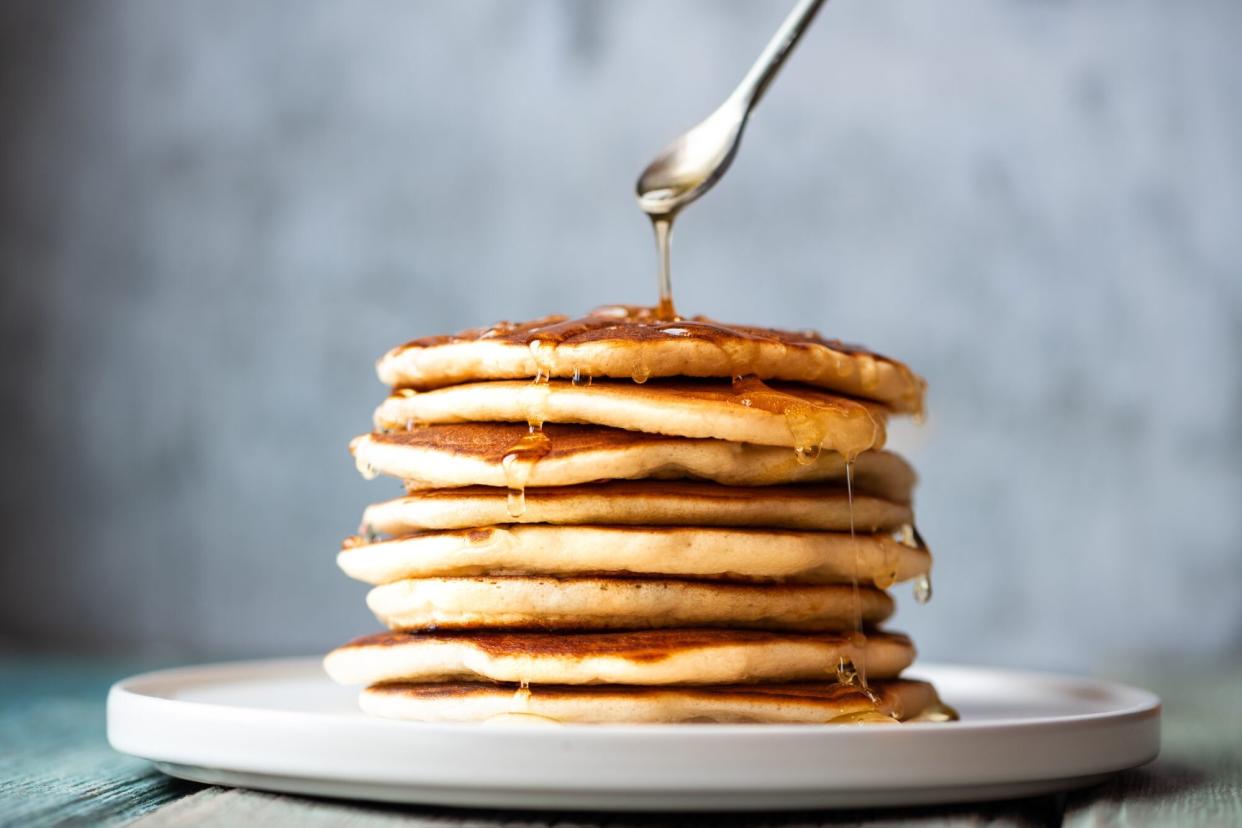How to Prevent the Exterior of Your Pancakes From Burning Before the Interior Is Cooked Through

GETTY IMAGES
TABLE OF CONTENTS
On This Page
Greasing the Pan
Distributing the Fat
Checking for Warping
Preheating Your Pan
Heating
Flipping
When it comes to sweet breakfast foods, pancakes reign supreme; the batter is easy to prepare, cooks quickly, and has a high yield. But if you get the cooking wrong, you'll end up with an uncooked middle and burned exterior, instead of golden brown on the outside and pillowy in the center. If this is a cooking mishap you encounter regularly, there are a few adjustments you can make that will help you make perfectly cooked pancakes—like using the right fat to grease your pan and knowing when and how often to flip.
Related: 7 Mistakes You're Making With Your From-Scratch Pancakes—and How to Avoid Them
Use a Fat With a High Smoke Point
When greasing your pan, Lourdes Castro Mortillaro, MS RDN, director of NYU Food Lab, says to use a fat with a high smoke point. "Once a fat reaches its smoke point, it begins to deteriorate and will produce uneven heat," she says. "The food you are cooking it in will develop off-colors and flavors."
According to Mortillaro, fats with high smoke points include coconut oil, ghee or clarified butter, and canola or grapeseed oil. If all you have is regular butter, food stylist and baker Molly Wenk says to wipe the pan clean in between batches and add a fresh pat to avoid burning.
Distribute Fat Evenly
To promote uniform cooking across the batter, you must ensure the fat you've chosen to cook with is evenly distributed on the pan. To do this, Wenk says to place the fat in a dish (if it's butter you'll need to melt it first) and use a pastry brush to lightly coat the pan.
Check Your Pan for Warping
Another thing that can cause pancakes to cook unevenly—and subsequently lead to burning in certain areas—is a warped pan. "I prefer a non-stick flat griddle, because a regular pan, if not new, can be warped in the center, causing the pancake to be thicker in the center and uneven cooking," says Bridget Vickers, associate dean at the Institute of Culinary Education. If you don't have a griddle, check your pan for signs of warping before using it to cook pancakes.
Preheat Your Pan
It's essential to preheat your pan or griddle before pouring the batter. According to Vickers, a griddle should be preheated to 375 degrees Fahrenheit, while a pan should be set over medium heat. She says that when the batter is ladled into the pan, the proteins instantly coagulate and sugars crystalize, this reaction promotes even cooking and creates a golden—not burned—crust and proper pancake structure.
Related: How to Release Stuck Pancakes from Your Pan or Griddle
Avoid High Heat
If you're cooking with a griddle, Wenk says to lower the heat to 360 degrees (the pan can stay over medium heat) before spooning in the batter. Mortillaro explains that high heat results in uneven cooking as it burns the outside while leaving the inside batter raw. "This is because the high heat does not allow enough time for the heat from the pan and oil to penetrate to the center of the pancake," she says.
Time Your Flip Correctly
Another way to encourage uniform cooking—and thus ensure your pancakes don't burn—is to time your flip correctly. Wenk says a pancake should be cooked for about three minutes on each side. If you flip too soon and your pancake isn't done cooking in the center, you risk burning the side that gets cooked longer. For a visual cue that your pancakes are ready to be flipped, Vickers says to wait until you see about four to six bubbles form and begin to pop in the center. Note that flipping more than once will cause your pancakes to be flat rather than fluffy.

